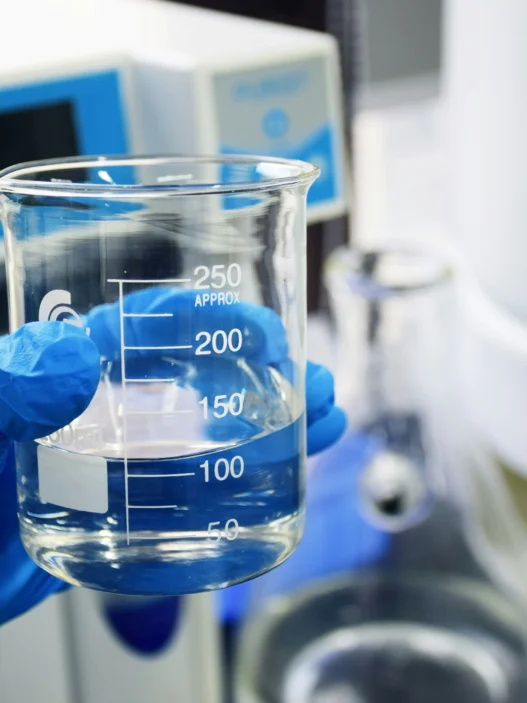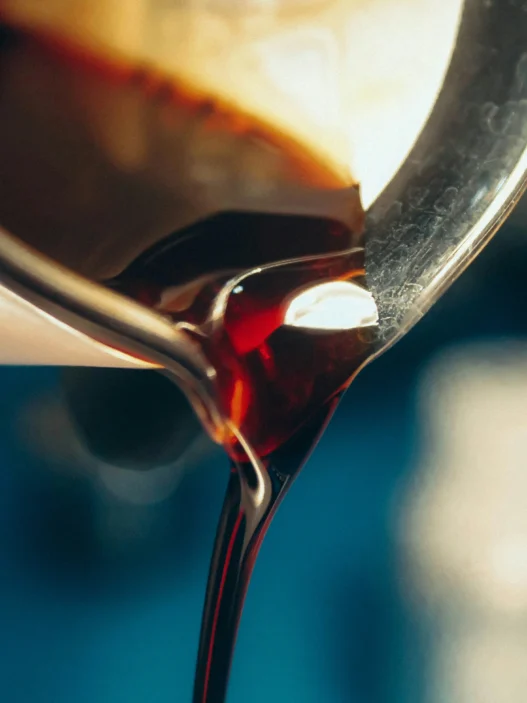Gamma-Butyrolactone, commonly referred to as GBL, is a chemical compound that is utilized in various industries such as pharmaceuticals, cleaning products, and plastics manufacturing. While not typically encountered in everyday life by consumers, GBL plays a significant role in the production of items that are commonly used on a daily basis. Its versatility as a solvent and precursor in chemical synthesis makes it a crucial component in the creation of numerous products that are essential for modern living.
Table of Contents:
- 💡 Commercial Applications
- ⚗️ Chemical & Physical Properties
- 🏭 Production & Procurement
- ⚠️ Safety Considerations
- 🔬 Potential Research Directions
- 🧪 Related Compounds
💡 Commercial Applications
Gamma-Butyrolactone (GBL) is commonly used in industry as a solvent for various applications. It is utilized in the production of pesticides, herbicides, and pharmaceuticals due to its versatile properties. GBL is also used in the manufacturing of polymers, as it can enhance the solubility of certain compounds.
In the commercial sector, gamma-Butyrolactone is employed as a cleaning agent and degreaser for machinery and metal surfaces. Its ability to remove grease, oil, and other contaminants makes it a popular choice for industrial cleaning purposes. GBL is also utilized in the surface treatment of metals to improve their corrosion resistance and adhesion properties.
In the realm of drug and medication applications, gamma-Butyrolactone is a precursor to the production of gamma-Hydroxybutyric acid (GHB), a central nervous system depressant. GHB is used medically as a sedative and anesthetic, as well as for the treatment of insomnia and narcolepsy. However, due to its potential for misuse and abuse, GHB is a controlled substance in many countries.
While gamma-Butyrolactone has a wide range of commercial and industrial applications, it is important to note its potential health risks and regulatory restrictions. Users should handle GBL with care and ensure compliance with local regulations when utilizing it for various purposes.
⚗️ Chemical & Physical Properties
Gamma-Butyrolactone is a colorless, oily liquid with a slight characteristic odor.
With a molar mass of 86.09 g/mol and a density of 1.13 g/mL, gamma-Butyrolactone is similar in molar mass to sucrose (table sugar) but denser than water.
Gamma-Butyrolactone has a melting point of -45 °C and a boiling point of 204 °C, both significantly higher than common food items like butter or chocolate.
Gamma-Butyrolactone is miscible in water and has a low viscosity, making it more soluble and less viscous compared to most common food items like salt or sugar.
🏭 Production & Procurement
Gamma-Butyrolactone, an important chemical compound with various industrial applications, is primarily produced through the hydrogenation of succinic acid or maleic acid. This process typically takes place in the presence of a catalyst such as palladium or platinum. The resulting product is then purified through distillation to obtain high-quality gamma-Butyrolactone.
Gamma-Butyrolactone can be procured from chemical suppliers and manufacturers who produce and distribute the compound in large quantities for industrial use. It is typically transported in bulk containers such as drums or intermediate bulk containers (IBCs) to ensure safe and efficient delivery to end-users. Special precautions must be taken during transportation to prevent spills or leaks of gamma-Butyrolactone, as it is a highly reactive and potentially hazardous compound.
In addition to traditional procurement methods, gamma-Butyrolactone can also be obtained through online chemical suppliers and distributors. These suppliers typically offer gamma-Butyrolactone in various quantities, ranging from small research-grade samples to larger industrial quantities. Customers can place orders online and have the compound shipped directly to their desired location, following all necessary regulations and safety protocols for handling and storage.
⚠️ Safety Considerations
Safety considerations for gamma-Butyrolactone (GBL) include its potential to cause skin and eye irritation upon contact. Inhalation of GBL vapor may cause respiratory irritation and dizziness. GBL should be stored in a cool, dry, well-ventilated area away from incompatible materials, such as strong oxidizing agents.
Hazard statements for gamma-Butyrolactone include “Causes skin and eye irritation” and “May cause respiratory irritation.” Additionally, GBL may cause dizziness and drowsiness if inhaled. It is important to handle GBL with caution and wear appropriate personal protective equipment to minimize exposure risks.
Precautionary statements for gamma-Butyrolactone advise users to avoid skin and eye contact, as well as inhalation of vapor. It is recommended to use GBL in a well-ventilated area and wear protective gloves and eyewear when handling the substance. In case of accidental exposure, it is important to seek medical advice immediately and provide the SDS (safety data sheet) to medical personnel.
🔬 Potential Research Directions
Potential research directions for gamma-Butyrolactone include exploring its role as a precursor in the synthesis of various chemical compounds and pharmaceuticals. Researchers may also investigate its potential as a solvent or a reagent in organic chemistry reactions. Additionally, there is interest in studying the toxicological properties of gamma-Butyrolactone and its potential health effects on humans and the environment.
Furthermore, research on the pharmacological effects of gamma-Butyrolactone, including its potential as a psychoactive substance or as a treatment for certain medical conditions, is an area of interest. Studies may also focus on understanding the mechanism of action of gamma-Butyrolactone in the body and its interactions with biological systems. Additionally, research may explore the potential development of gamma-Butyrolactone-based drugs for various therapeutic purposes.
Another potential research direction is investigating the industrial applications of gamma-Butyrolactone, such as its use as a solvent in the manufacturing of polymers, plastics, and other chemical products. Researchers may also explore the potential for gamma-Butyrolactone to be used as a precursor in the production of specialty chemicals with high commercial value. Additionally, there is interest in studying the environmental fate and impact of gamma-Butyrolactone in various industrial processes.
🧪 Related Compounds
One similar compound to gamma-Butyrolactone is 1,4-Butanediol. This compound is a colorless liquid with a similar molecular structure, containing four carbon atoms in a chain with adjoining alcohol groups. 1,4-Butanediol is commonly used as a solvent and in the production of plastics, but it also has been used illicitly as a recreational drug due to its euphoric effects.
Another related compound is gamma-Hydroxybutyric acid (GHB). GHB is a naturally occurring compound found in the central nervous system and has effects similar to gamma-Butyrolactone when ingested. GHB is a neurotransmitter and psychoactive drug with sedative and euphoric properties. Despite being used therapeutically for conditions like narcolepsy, GHB is also known for its abuse potential and classification as a controlled substance in many countries.
A further compound akin to gamma-Butyrolactone is Tetrahydrofuran (THF). THF is a cyclic ether compound with a molecular structure containing four carbon atoms in a ring. Like gamma-Butyrolactone, THF is a colorless liquid with industrial applications as a solvent and in the production of polymers. THF is also a precursor to the production of pharmaceuticals, making it a versatile compound in various industries.





